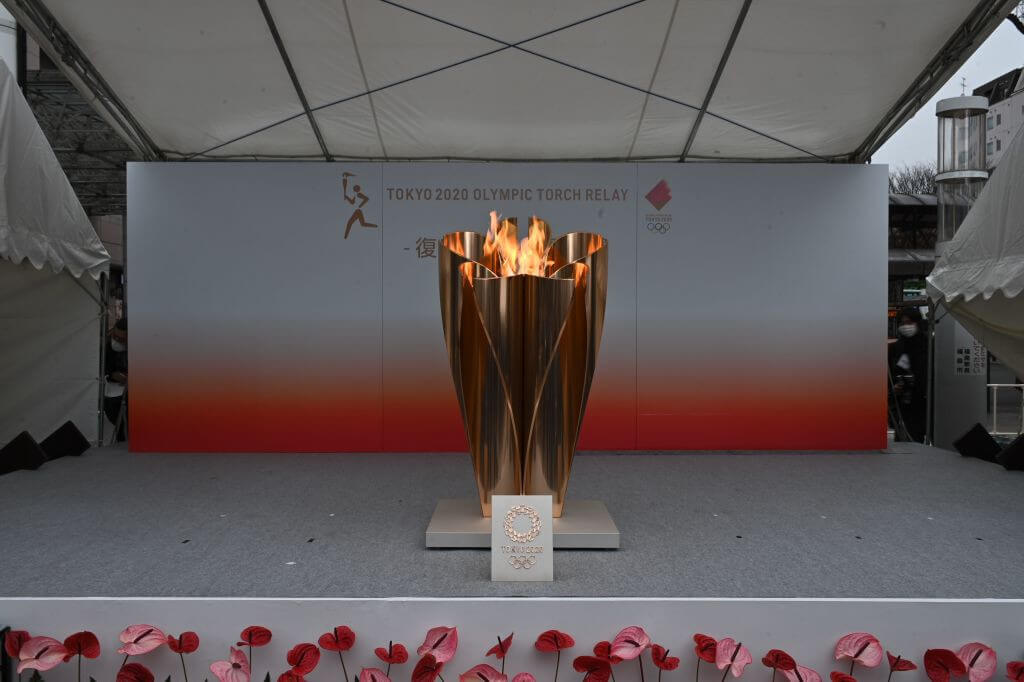
Tokyo 2020: Overcrowding Could Lead To Torch Relay Suspension – Hidemasa Nakamura
Tokyo 2020 warn overcrowding could lead to Torch Relay suspension.
Hidemasa Nakamura, Tokyo 2020’s Games delivery officer, said: “We can send out announcements that we have no choice but to stop the relay in order to secure a safe and secure event.
“We don’t want to imagine where this happens but we are going to take several steps and implement the measures step by step.”
Tokyo 2020 chief executive Toshirō Mutō made a further plea to spectators to “refrain from watching the Torch Relay in a crowded situation”.
“Please ensure that you have physical distance,” he added.
“We want to ensure a safe Torch Relay not only for the bearers, but for the people in the local communities who are kind enough to host it.”
The Grand Start of the 121-day Relay is scheduled for next Thursday (March 25) at the J-Village national football training centre in Fukushima.
The Flame will be carried by members of Japan’s 2011 FIFA Women’s World Cup-winning team.
The Torchbearers will not include striker Nahomi Kawasumi, who has confirmed her decision to withdraw from the Relay.
Kawasumi, who plays for New Jersey club Sky Blue in the United States, had originally expressed doubts about taking part last year.
In a message on Twitter, Kawasumi said: “Once again, I will decline the Torch Relay runner on March 25, 2021.
“I made this decision because the infectious disease problem has not yet been resolved and I live in the United States.
“Now, I hope that this situation will be resolved and everyone’s health will be as soon as possible.
“The days of patience will continue, but let’s step on together!”
Organisers have said that Tokyo 2020 President Seiko Hashimoto is expected to attend the Grand Start “to express gratitude for the support for the reconstruction received from people all over the world and to show the steady progress that has been made across the region”.
The ceremony will feature music performances by local residents’ groups and songs from a children’s choir.
It will be streamed live online and covered extensively by the Japanese television network NHK, but no spectators will be permitted.
On subsequent stages, spectators at the roadside will be allowed.
“Dense crowds are rather difficult to define,” said Nakamura.
“It is rather difficult to have a uniform definition but we need to have certain judgement criteria if this situation occurs.”
He insisted that in some situations where “many spectators are crowded where shoulders touch”.
“If it is multiple roads, we need to send out requests saying they need to be scattered,” he added.
In the event of what organisations classified as “red status”, warning announcements to disperse would be made in Japanese from the lead vehicle in the Relay convoy.
“We are doing the Torch Relay on public roads so it is rather difficult to ensure distancing, but still we need to send out precautions that the physical distance must be observed,” said Nakamura.
Organisers said there would be “stronger guidance” and the possible deployment of the local police if the congestion is not resolved.
Nakamura said that three “drills” had been carried out in recent weeks using the vehicles which will form the Torch Relay convoy.
These included specialised rehearsal on COVID-19 countermeasures.
Tokyo and three neighbouring prefectures remain under a state of emergency.
Nakamura insisted that operational arrangements for the Relay may well change as the event proceeds.
“All the other prefectures will learn from what is happening,” he said.
“We will look at what happens in the early days.
“This is going to be a long Relay and as we go we may have to change the rules of operation.
“We will be flexible.”
Relay organisers will also closely monitor weather conditions before each stage.

